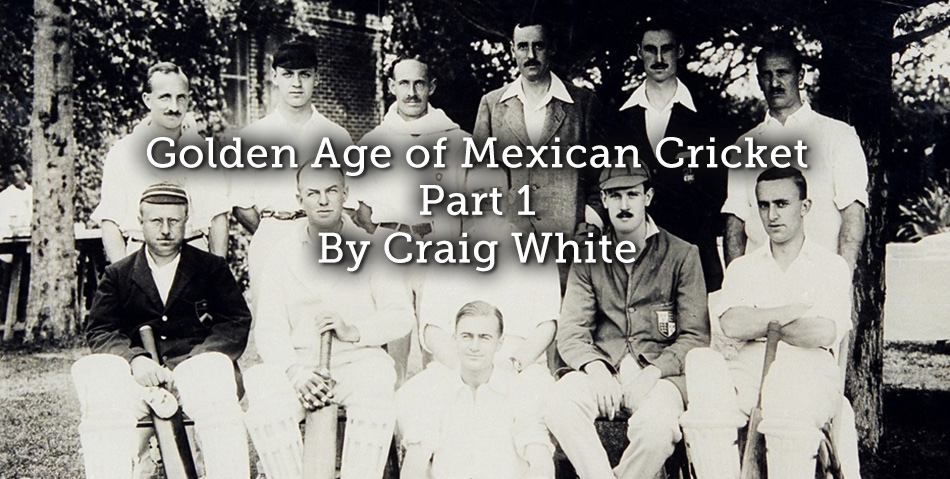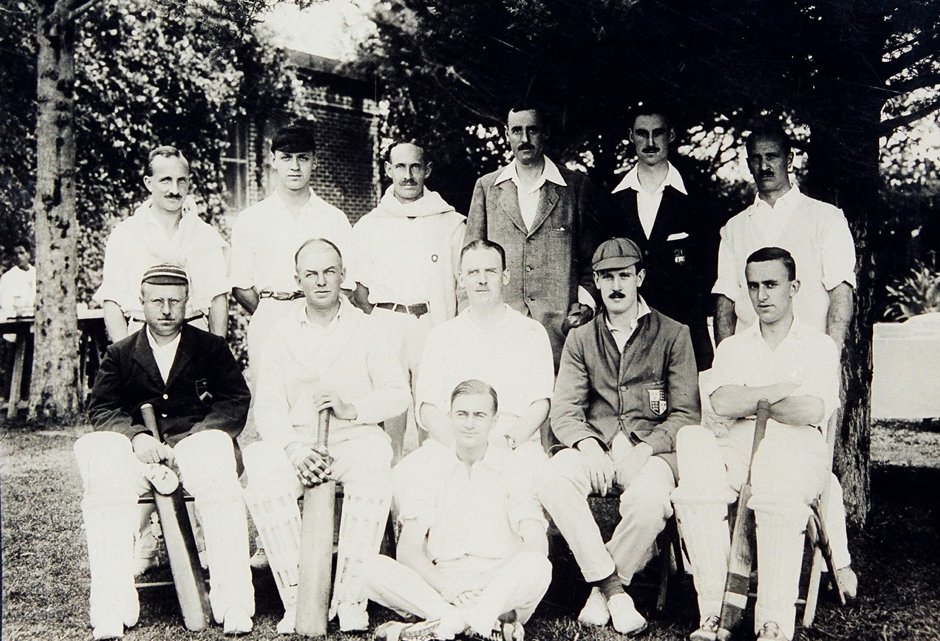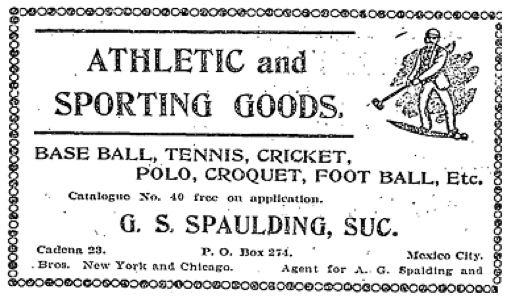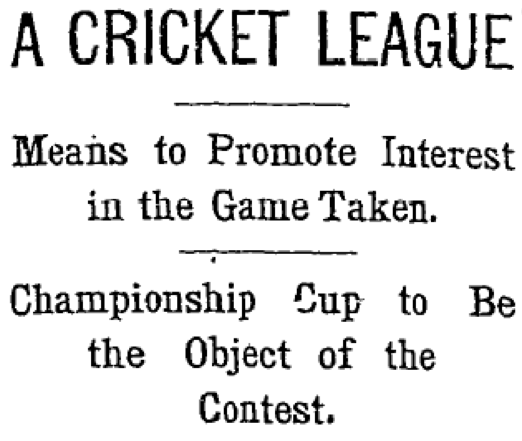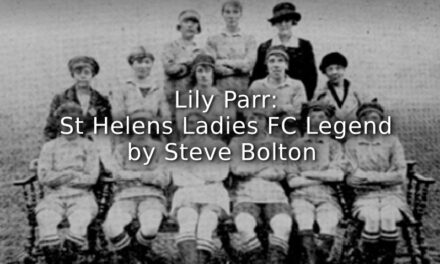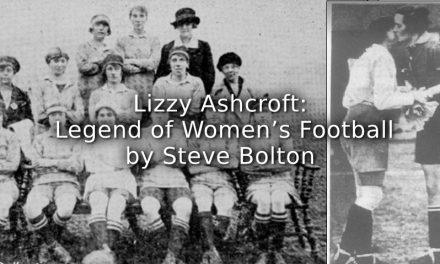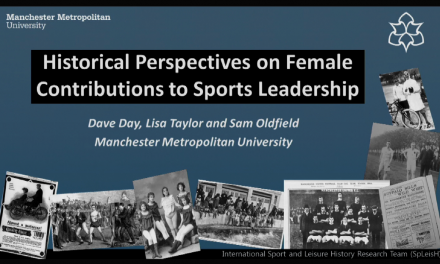The regime of President Porfirio Diaz that ruled Mexico from 1876 to 1911 (known as the Porfiriato) brought political and economic stability to the country for first time. His dictatorship saw the rapid industrialisation of the republic, aided by a huge expansion in foreign investment in which the United Kingdom was at the forefront. There was a large influx of Britons in addition to Australians, Canadians and New Zealanders who came to live and work in Mexico, and they brought cricket with them.
Mexico is, surprisingly, one of the oldest cricket centres in the world outside the United Kingdom. Michael Costeloe reveals in his “To Bowl a Mexican Maiden Over: Cricket in Mexico” that cricket was played as far back as 1827, just six years after independence from Spain.[1] However, it was not until the Porfiriato that the sport became organised.
Cricket was played throughout Mexico, but it was strongest in the centre of the republic, chiefly in Mexico City and the state of Hidalgo. Teams playing in the capital included: The Reforma Athletic Club, Mexico Cricket Club, Mexico Wanderers, British Club, United Railway Men, Read and Campbell Cricket Club, Pearson and Son, Mexico Gas and Electric Light Company, and a Canadian eleven. Even the teachers at the English College turned their arms over and wielded the willow. Just outside town in San Cristobal in June 1890, employees of the British construction firm Pearson and Son, who were building the Grand Canal to drain the Valley of Mexico to stop Mexico City from flooding, created the San Cristobal British Cricket Club. In nearby Zumpango, too, where the firm was digging a tunnel as part of the works, the staff created the Zumpango Cricket Club to keep themselves occupied. Mr. Braine broke his nose in June 1892 during a match between the two sides while diving into reach his ground for San Cristobal British Cricket Club before the wicketkeeper could break the stumps. “My nose is still the most striking feature of my face”, our hero told The Two Republics newspaper afterwards in good humour.
The mountains of Hidalgo, meanwhile, were home to Pachuca Cricket Club, Velasco Cricket Club, and Real del Monte that were set up long before the Porfiriato. The British had been present since 1824 when Cornish miners, complete with their pasties, settled in the region to reconstitute the silver mines after the War of Independence. The three teams eventually came together to form the Pachuca Athletic Club in 1895.[2]
- Figure One: Cricketers of The Reforma Athletic Club. Source- The Reforma Athletic Club
Elsewhere, to give but a few more examples of cricket’s reach in Mexico, El Eco del Comercio reports on 5 November 1892 that, in Merida in the jungles of the Yucatan Peninsula, “the Champion Club has been formed in the city by young enthusiasts who will have cricket and baseball as their favourite games”. Some 2,300 kilometres away in the north, Scotsman David McKellar and his family had moved to the desert of Coahuila a couple of months before from New Zealand. He had bought Las Rucias ranch near Santa Rosa, where he intended to go into ranching and property development as well as create a Scottish settlement in the area. His daughter Margaret wrote of the family’s experience for Otago’s Tapanui Courier.
David quickly became the President of the Santa Rosa Athletic Club, or “Los Rancheros” as they were known, which the “Englishmen [from the surrounding ranches] had got up among themselves”.[3] He hosted a match on 4 July at his ranch between Los Rancheros and a side “composed of Englishmen” from Porfirio Diaz City who were building the railway between San Antonio in the United States and Mexico City. The teams arrived the night before where a grandstand had been erected for the big game.[4] Well prepared, Los Rancheros brought a supply of ice that “was installed with great ceremony in one of the storehouses, where the gentlemen superintended the cooling of beer with much interest”.[5]
The following day “all the cricketers were up almost at daybreak, and after snatching a hurried breakfast, they hastened off to the field to take advantage of the coolest part of the day”. Margaret went to watch the second innings with her mother, taking melons with them for the players. When they arrived, “the sun was getting very hot and none of the players seemed at all averse to a lounge under the shade of the grandstand – as they enjoyed the melons”. Los Rancheros went onto defeat Porfirio Diaz City by 65 runs. Afterwards, most of the players went off for a smoke and a siesta although some chipped in to help put up the tables in the house for dinner. Dinner was served and a good time was had by all before the players “drove home amid great rejoicings”.[6]
The celebrations were to be short-lived, however. David’s insistence on fencing off his land angered local Mexican ranchers, who had let their cattle freely graze and water on the property before he arrived. After several confrontations, things came to a head a few weeks later when, on the night of 29th July, David was shot dead in an ambush while riding home alone from Santa Rosa.
CRICKET CHALLENGE CUP
Back in the centre of Mexico, the clubs of Mexico City and Hidalgo created the Challenge Cup in January 1896 to encourage competition. The rules were published in The Mexican Herald and Two Republics:
The cup is to be held by any club winning it, but they will be compelled to accept the challenge of any other club, who, in the event of winning it will in turn hold it until it be won from them. Place and date of the match being at the option of the holders, but they will be compelled to accept said challenge to play for the cup, within one month of the date of receipt of the challenge. Failing to do this will the cup will pass into possession of the challenging club, under the above conditions.[7]
Games for the trophy were played on a Sunday during the dry season from October to June, while equipment could be bought from sportswear tycoon G. S. Spaulding who had an outlet in Mexico City and advertised his wares in the English language press.
- Figure Two: Cricket gear for sale in The Mexican Herald, Sunday 17 July 1904
Over the years that followed the matches between them spurred the further development of cricket in the republic. The British working in the textile industry in Puebla founded the Puebla and District Cricket Club in August 1899 to join the fray for the Challenge Cup, with one enthusiastic supporter offering to donate cricket materials (or cash) to the side.[8] Nicknamed “the Village Green Team” and sporting a yellow, brown and blue uniform complete with a cap bearing the town’s coat of arms, the team used the local velodrome for their matches, but this brought nothing but grief. “Does anyone know a method to exterminate moles?” grumbled one of the players in The Two Republics, “the Puebla cricket ground has been ruined by the ravages of these tiresome animals. The whole service has been undermined by them and a network of tunnelling is to be observed on every hand.”[9] “The Puebla cricket ground has gone to the dogs”, fumed another in The Two Republics. “First the Spaniards pitched their Covadonga fair on it and then the Mexicans on their Independence Day took it into their heads to hold a cavalry charge over it, part of a sham fight that took place.”[10] The Mexican Herald revealed how the recent “French fete played the Dickens with the Velodromo cricket ground. Large trenches and small graves were dug out on the match pitch itself.”[11]
CRICKET LEAGUE
In March 1900 The Reforma Athletic, Mexico Cricket Club, Pachuca Athletic Club, and Puebla and District Cricket Club established a league to make matches for the Challenge Cup more structured. It was the first sports league in Mexico. Based on the English County Championship and run by a central committee, The Mexican Herald and The Two Republics described how the competition worked.
Each club has to play two games, one at home and one away, with every other club, the results to be reckoned by points recording to the Country Championship rules in England and the club which obtains the most points at the end of the season will become entitled to hold until next season the Championship Cup.[12]
- Figure Three: The cricket league. Source- The Mexican Herald, Thursday 29 March 1900
Article © Craig White
In the second part of this paper we will follow the ups and downs of the league.
References
[1] Costeloe, Michael P., ‘To Bowl a Mexican Maiden Over: Cricket in Mexico, 1827-1900’, Bulletin of Latin American Research, 26, 1 (2007), pp. 112-125.
[2] The Mexican Herald, Sunday 6 October 1895, p.8
[3] M. M. McKellar, Life on a Mexican Ranch, London, Associated University Press, 1994. p.106.
[4] Ibid., p.107
[5] Ibid., p.108
[6] Ibid., p. 111
[7] The Mexican Herald, Thursday 21 January 1897, p.8.
[8] The Mexican Herald, Friday 11 August 1899, p.5.
[9] The Two Republics, Tuesday 22 May 1900, p.5.
[10] The Two Republics, Tuesday 26 September 1900, p.8.
[11] The Mexican Herald, Tuesday 6 August 1901, p.5.
[12] The Mexican Herald, Thursday 29 March 1900, p .3

